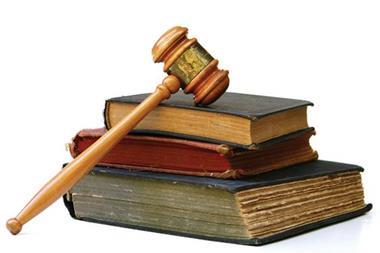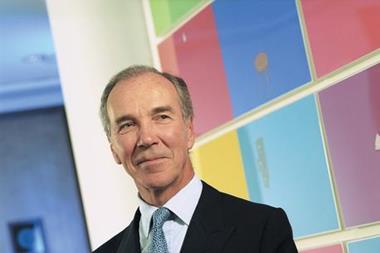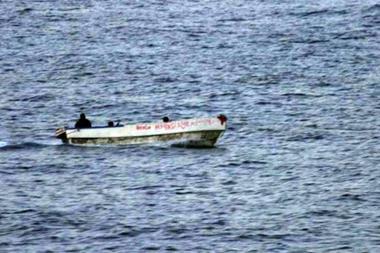The swell in piracy attacks, particularly off the Somali coast, has been costly for insurers. With marine insurance only covering physical damage and a confusion over how to deal with kidnap and ransom risk, is it time to sweep the decks for a new wave of specific piracy policies?
On 30 September, a gang of nine pirates seized the Greek-owned, 300,000 tonne Maran Centaurus super-tanker, some 800 miles off the Somali coast. The incident illustrated the ease with which pirates continue to prey on ships far out to sea, despite the efforts of the EU, Nato and other warships.
It also shows why voyages in certain parts of the world carry a huge risk factor, to the increasing cost of both insurers and their clients. In such circumstances, an expert team of lawyers, underwriters and security professionals will have swung into action to begin the hugely complex business of resolving the pirates’ demands.
It is a scenario that is taking place with increasing frequency: 306 piracy incidents worldwide were reported to the International Chamber of Commerce’s International Maritime Bureau piracy reporting centre in the first nine months of 2009, compared with 293 for the whole of 2008. Worryingly, the total number of incidents involving guns rose by more than 200%, compared with the same period in 2008.
This massive increase in attacks is a direct result of the proliferation of piracy off the Somali coast and in the Gulf of Aden (see below). Each year, about 20,000 ships sail through the area headed for the Suez Canal, so unless they have the time to sail around the horn of Africa, shipowners have to run the gauntlet.
The pirates in the region target crews for ransom rather than raiding the ships’ cargo, so human lives are at stake. This is a strategy that is causing a host of issues for the insurance industry. “Traditional marine insurances are set up more to cover physical damage,” Talbot Underwriting chief executive Rupert Atkin says. “When it comes to settling ransom claims, the picture can be very confused.”
Charterers may find they are not covered for their losses, while shipowners may find that they cannot recoup all the ransom costs.
The cost to underwriters is escalating: the average ransom rose from $1m-$2m (£616,000-£1.23m) in 2008 to $2m-$3m in 2009. But the eventual claim is more than double this amount, after intermediation, legal and delivery costs are taken into consideration. Also, with ransoms taking around 60 to 70 days to reach a settlement, there are the additional costs of late or non-delivery of cargo.
As for the total cost of piracy claims for the insurance industry, there are no exact figures but reports suggest it could well exceed $100m.
Grey area
So why has piracy become such a problem off the East African coast? War-torn Somalia has had no functioning government since 1991, allowing pirates to operate almost with impunity. The combination of Somalia’s poverty and lawlessness means that the risks for pirates are relatively low against the gains made from a successful attack.
Somalia’s own navy is bereft of ships and equipment, while the 30 or so EU and Nato ships, together known as the Combined Maritime Forces (CMF), cannot effectively patrol the 1.5 million square miles of Indian Ocean in which the pirates operate.
“The pirates’ area of operation is increasing all the time,” Lloyd’s Market Association (LMA) senior technical executive Neil Roberts says. “It is unprecedented for attacks to be taking place 1,000 miles off shore. The pirates are adapting their strategy to avoid the CMF.”
These attacks lead underwriters into a grey area: at present, piracy is either covered by hull and machinery (H&M) cover or by war risk cover, depending on the market involved.
Since 2005, when the number of piracy attacks began to escalate, cover for losses arising from piracy has been moved from H&M to war, so that around 90% of the policies that cover piracy risk in the London market now sit under war.
War risk policies are typically paid per transit, and underwriters often charge additional premium for trips through high-risk areas. The Gulf of Aden, for example, has been on the LMA Joint War Committee’s high-risk list since May 2008.
But, as William Miller, account executive at Special Contingency Risks (SCR), a unit of Lloyd’s broker Willis that specialises in kidnap insurance, explains, there is still confusion. “Under H&M or war risk, you cannot be 100% certain which costs will or will not be covered because these policies are not detailed in relation to piracy.”
Covering the cost of kidnap and ransom is even more complex. “Ransom is a peril not covered by any market,” Roberts says. “Kidnap and ransom cover is completely separate from usual marine insurances and is a very specialist area. These policies are designed to cover individuals rather than groups, such as a ship’s crew.”
In most instances, shipowners pay the ransom and additional costs upfront and then claim pro rata reimbursement from all the ship’s stakeholders under the law of general average.
As a result, in addition to hull insurers, cargo and third-party liability, underwriters are also asked to pay up, although the latter, represented by the protection and indemnity (P&I) clubs, often refuse.
But pressure is mounting on these clubs to contribute. Law firm Holman Fenwick Willan consultant John Knott, who has acted for shipowners and underwriters in Somali piracy cases, explains: “The P&I clubs would generally become liable if, for example, there were death or injury to crew members, or loss of cargo, or pollution.
“By paying a ransom, the other insurance interests are avoiding these possibilities, and so are in effect benefiting the P&I clubs. This has led to some controversy, as the clubs do not want to set a precedent for making a contribution to hijacking cases, and some even expressly exclude piracy risks from their cover.”
Getting specific
The case of the Malaspina Castle is now also challenging the assumption that cargo should contribute to general average. On 6 April 2009, Somali pirates hijacked the ship, which was on its way to China from a Russian port on the Black Sea. The pirates released the ship a month later for $1.8m in ransom.
Hangzhou Cogeneration Import and Export Co – the Chinese firm that shipped 30,000 tonnes of iron on the Malaspina – refused to contribute to the ransom or the $2m in additional costs that the London-based shipowner Navalmar had to pay.
Creating one policy for piracy claims is much simpler for underwriters than having several options, and ensures there are no gaps in cover, according to SCR’s Miller.
“As well as giving specific cover for all the costs peculiar to piracy, special piracy policies can cover costs immediately while general average can only be calculated once the vessel reaches its destination,” he says.
Miller argues another key benefit of such a policy is gaining access to professional ransom negotiators; clients get to ‘jump the queue’. It’s an attractive prospect considering that at one point this year, 25 vessels were being held by pirates, so competition for the best negotiators can be huge.
Specific piracy cover also waives the right to subrogation. In other words, it does not look to any other markets for reimbursement. Claims are therefore settled more quickly.
But all this does not come cheap. SCR estimates that the cost of insuring a ship sailing through the Gulf of Aden against piracy is $15,000 to $20,000. As more underwriters offer this special piracy cover, however, the premiums will inevitably begin to fall.
Measures are being taken to tackle piracy. Combined Task Force 151 is a multinational group established to conduct counterpiracy operations throughout the CMF area of responsibility.
Ship crews are also increasing their vigilance and using devices such water canons to repel attacks. But the consensus is that the problem will continue until Somalia stabilises, an onerous goal given the failed history of peacekeeping missions in the country.
In the meantime, many would like to see more co-operation between the countries most affected by piracy and those states closest to the action. As the LMA’s Roberts says: “Over 90% of the world’s goods are transported by ship. If that cannot be protected, that’s a big issue.” IT
Piracy hotspots
Piracy is a worldwide issue but the Somali coast has seen the problem proliferate: 47 incidents were reported this year compared to just 12 for the same period in 2008. The Gulf of Aden, which ships must sail through to access the Suez Canal, saw 100 incidents compared to 51 during the same period. Attacks are now executed so far out in the Indian Ocean that some Somali pirates operate not far off the Seychelles.
There has also been an increase in pirate attacks in Brazil, Nigeria, the Malacca Straits, Thailand, Vietnam and the South China Seas. Some incidents are clearly ‘copy-cat’ attacks, with the crew being held for ransom; the worry is that the success of the Somali pirates has inspired criminals globally.






































No comments yet